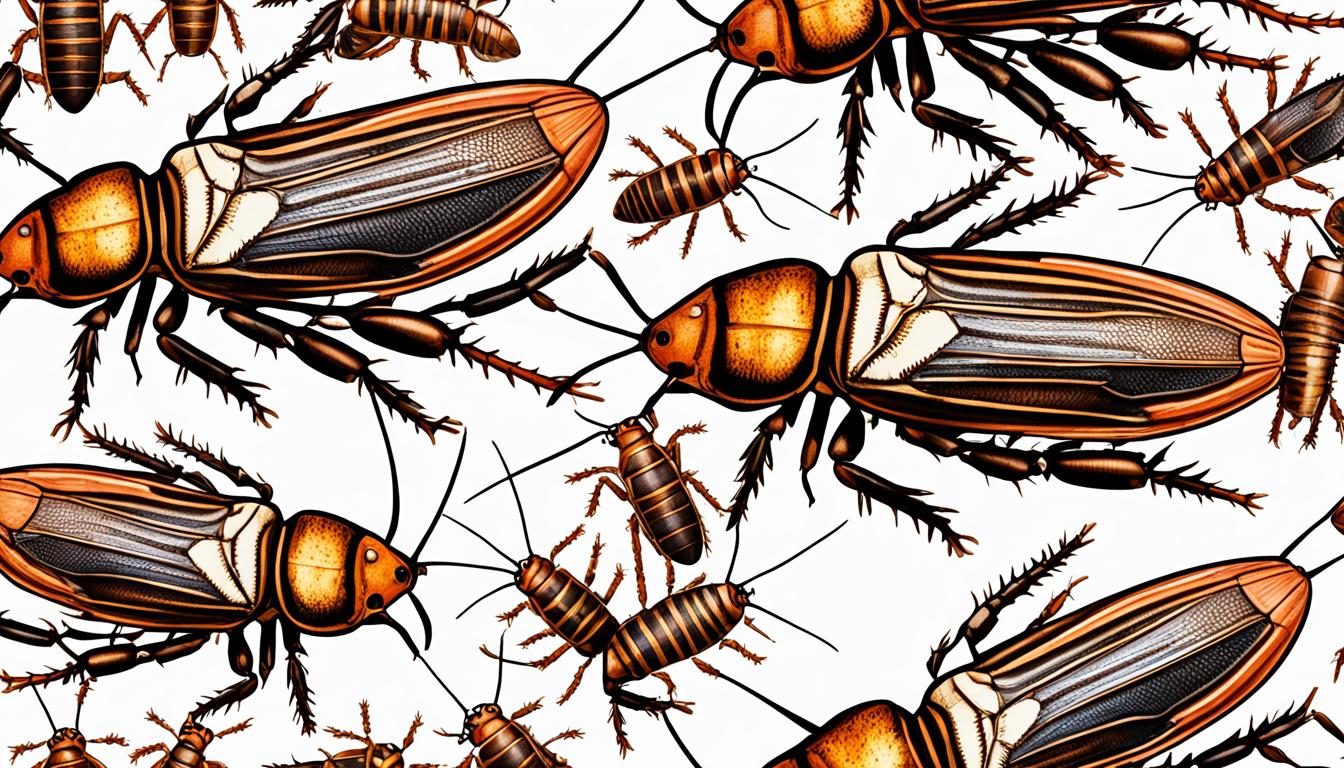The brown-banded cockroach is a small type found in homes. It gets its name from the two bands it has. These bands are on both young and adult roaches.
It looks a lot like the German cockroach. You can tell the difference because the brown-banded type doesn’t have dark stripes on its back. These cockroaches are known for being found in many places in homes, not just the kitchen.
They are believed to have come from Africa. They were first found in the United States in Miami in 1903.
Introduction to the Brown-banded Cockroach
Scientific Name and Classification
The brown-banded cockroach is known as Supella longipalpa (Fabricius) in science. It’s a small type that lives with people. This cockroach is in the family Ectobiidae. That family used to be called Blattellidae. It got its name from Johann Christian Fabricius, a German scientist. He talked about it in 1798. This insect is in the group known as cockroaches.
Physical Appearance and Identification
The brown-banded cockroach looks different from others. You can tell because it has light bands on its back. Adult males are a bit longer than adult females. But, females are bigger. Males have wings that go all the way down their backs. Females’ wings are shorter. They don’t stretch the whole way. Both have dark bands on their wings.
| Feature | Description |
|---|---|
| Size | Adult males: 13-14.5 mm, Adult females: 10-12 mm |
| Wings | Male: Fully developed, covering abdomen Female: Shorter, not covering entire abdomen |
| Body Coloration | Two light-colored bands across the back |
| Wing Coloration | Two dark horizontal bands on closed wings |
Brown-banded Cockroach Species Names
The brown-banded cockroach has a scientific name, Supella longipalpa. It has had many names over time. This shows how its name and understanding have changed.
Here are some old names for this cockroach:
- Blatta longipalpa Fabricius
- Blatta supellectilium Serville
- Blatta cubensis Saussure
- Blatta phalerata Saussure
- Blatta incisa Walker
- Blatta extenuata Walker
- Ischnoptera quadriplaga Walker
- Ischnoptera vacillans Walker
- Blatta transversalis Walker
- Blatta subfasciata Walker
These names show the cockroach has spread far. They also show how science has studied and named it. Now, it is known as Supella longipalpa everywhere.
| Scientific Name | Synonyms |
|---|---|
| Supella longipalpa |
|
Life Cycle and Habitat Preferences
The brown-banded cockroach starts life as an egg in a safe case. In each case, there are usually 18 eggs. But only about 13.2% of these eggs will hatch.
Next come the young cockroaches or nymphs. They grow through 6 to 8 stages and shed their skin. You can spot them by the light bands on their bodies.
Egg and Nymphal Stages
Eventually, the brown-banded cockroach nymphs become adults. These adults are quite small, only 11 to 14.5 mm long.
Adult Stage and Habitat
The adult brown-banded cockroachs like it warm and dry. You might find them near refrigerators or on walls. They avoid water and are seen more near ceilings.
These roaches came to the US from Africa. Now they live in most states, except Alaska. But, their numbers are dropping because houses are cooler and drier inside due to air conditioners.
| Life Cycle Stage | Description |
|---|---|
| Eggs (Oothecae) | Each egg case has about 18 eggs, and 13.2% hatch. |
| Nymphs | Nymphs change skin 6 to 8 times and have two light bands. |
| Adults | Adult brown-banded cockroaches are 11 to 14.5 mm long. They like warm, dry spots. |
Conclusion
The brown-banded cockroach is small but very important. It’s known as Supella longipalpa. You can spot it by the two light bands on its back. It likes warm, dry places, making it a common pest in houses and buildings.
It’s key to know about this cockroach to control it well. It spreads harmful bacteria like E. coli and Salmonella. It can also cause asthma in some people. To keep them away, follow good hygiene and use pest control carefully.
To sum up, the brown-banded cockroach is a big concern for homes and buildings. Knowing about its habits help us stay safe. We should use these tips to keep our living spaces clean and free from these pests.

